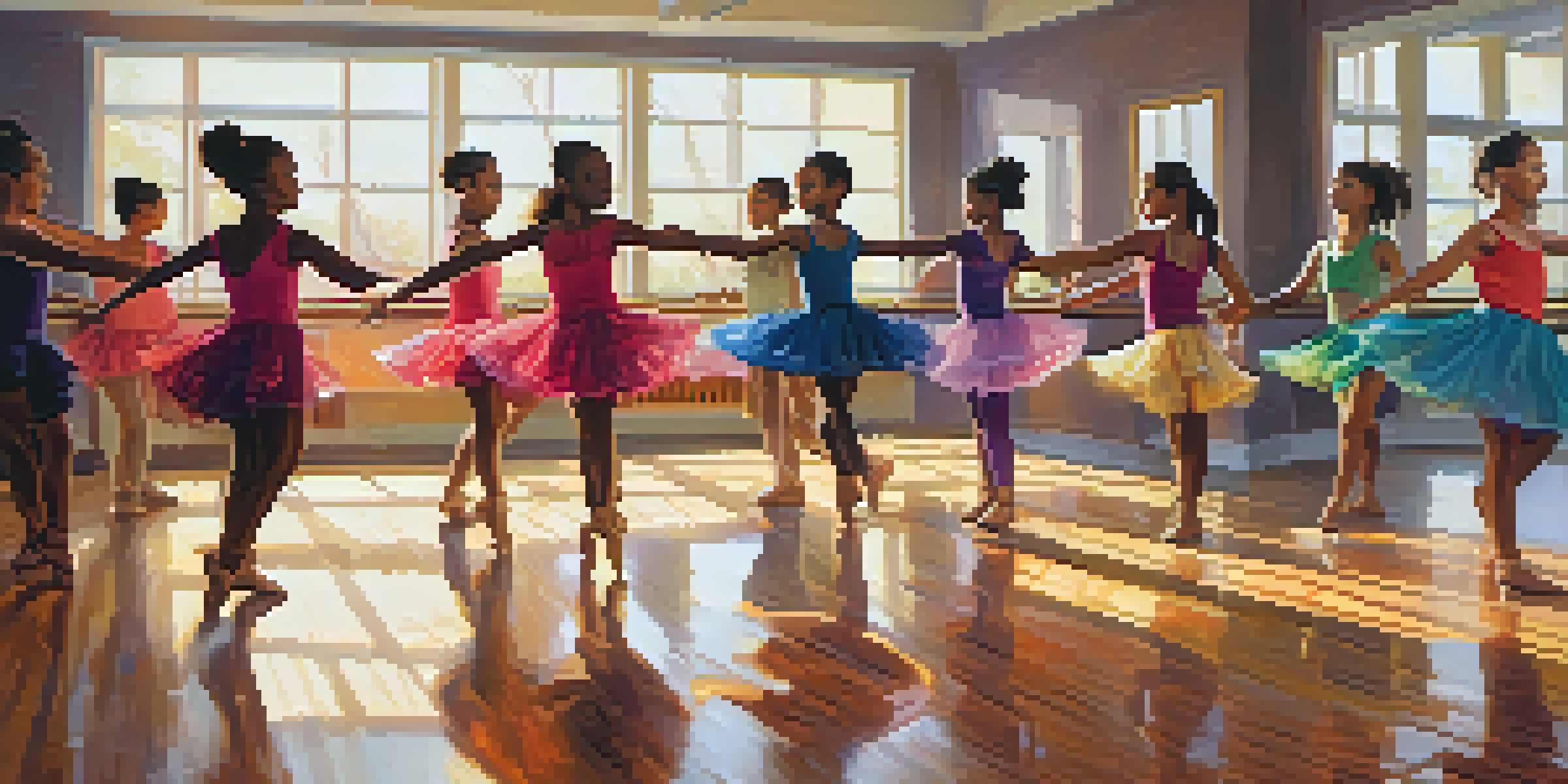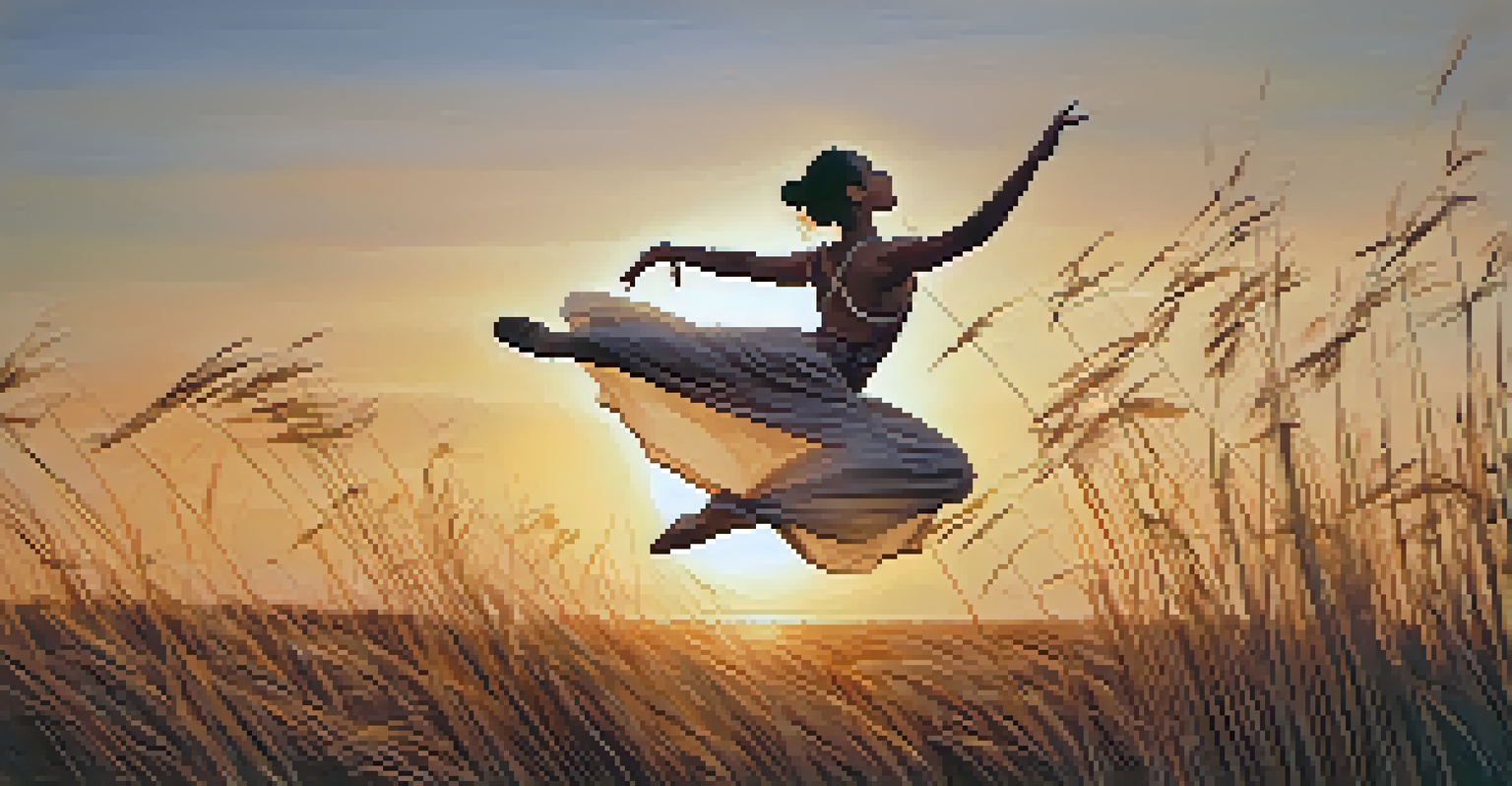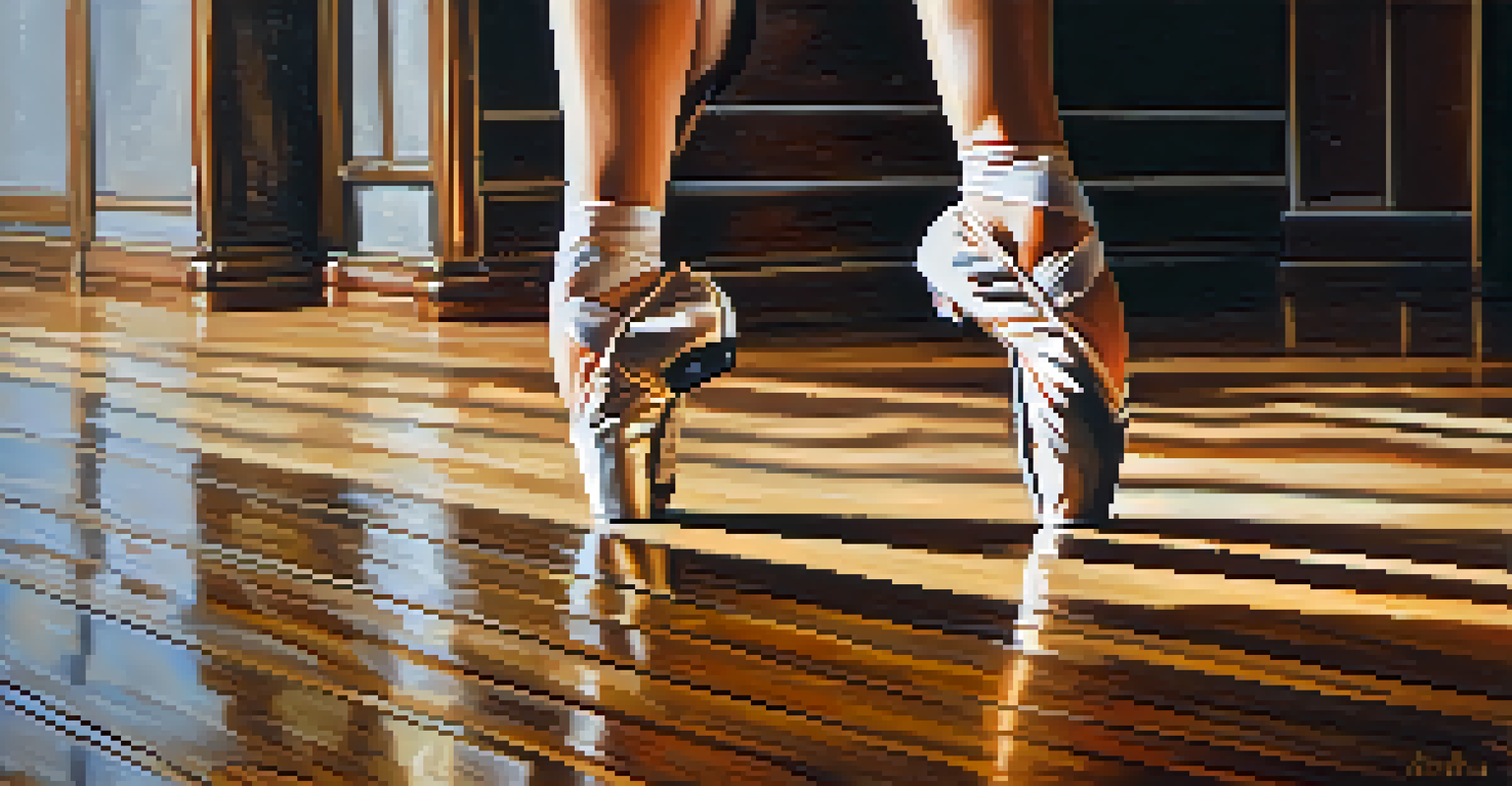How Dance Improves Self-Esteem and Body Image Positively

Dance as a Confidence Builder
Dance is a powerful medium for building confidence. When you step onto the dance floor, you often leave behind insecurities and self-doubt. The sheer joy of movement allows individuals to express themselves freely, fostering a sense of accomplishment with every step.
Dance is the hidden language of the soul.
As you learn new moves and improve your skills, you witness your own growth. This progress not only boosts your confidence but also encourages you to take on new challenges in other areas of life. Like climbing a mountain, each dance class is a step upward, reinforcing the belief that you can achieve your goals.
Moreover, dancing in a group setting creates a supportive community. The encouragement from fellow dancers can uplift spirits and help everyone feel valued, contributing to a positive self-image that extends beyond the dance floor.
Body Awareness Through Movement
Dance enhances body awareness, which is crucial for developing a positive body image. As you move, you become more attuned to your body’s strengths and capabilities. This awareness encourages appreciation for what your body can do, rather than focusing solely on appearance.

For instance, practicing dance styles that emphasize flexibility or strength can lead to a newfound respect for your body. This appreciation transforms how you view yourself, shifting from a critical perspective to one that celebrates your unique attributes.
Dance Boosts Confidence
Engaging in dance fosters self-assurance by allowing individuals to express themselves and celebrate their growth.
Embracing your body’s journey through dance helps to cultivate a more realistic and loving self-image. It’s a reminder that every body is different, and that's what makes each dancer unique and beautiful.
Expression of Emotions Through Dance
Dance provides an outlet for emotional expression, which can significantly improve self-esteem. Whether you’re feeling joyful, sad, or everything in between, movement allows you to channel these emotions in a constructive way. This connection between body and spirit fosters a sense of liberation and release.
Dancing is like dreaming with your feet.
When you dance, you're not just moving your body; you're telling a story. This storytelling aspect allows individuals to connect with their feelings deeply, promoting emotional well-being and a sense of self-worth. Just like a painter with a canvas, you create a masterpiece with each performance.
Moreover, expressing emotions through dance can lead to healing. It encourages individuals to confront and process feelings, resulting in a more profound understanding of themselves and, ultimately, a healthier self-image.
Social Connections Through Dance
Engaging in dance often leads to new social connections, which can enhance self-esteem. Dance classes or social dance events provide opportunities to meet new people, making it easier to form friendships based on a shared passion. These connections can be incredibly empowering.
When you dance with others, you build a sense of belonging. Feeling accepted by a community boosts your confidence and reinforces the idea that you are valued just as you are. This sense of belonging can be a game-changer for someone struggling with self-image.
Movement Enhances Body Awareness
Through dance, individuals develop a positive body image by appreciating their body's strengths and capabilities.
Additionally, social dancing encourages collaboration and teamwork. Learning to work together with others not only hones your dance skills but also fosters a supportive environment that uplifts everyone involved.
Dance as a Form of Self-Care
Incorporating dance into your routine can serve as a wonderful form of self-care. Engaging in movement helps alleviate stress and anxiety, allowing you to focus on your well-being. Just like a warm bath or a good book, dance nurtures your mind and soul.
The rhythmic nature of dancing can be meditative, offering a break from daily pressures. It creates a space where you can disconnect from worries and reconnect with yourself. This mindful aspect of dance promotes a positive self-image by encouraging acceptance and love for who you are.
By prioritizing dance as a self-care practice, you send a message to yourself that you are worthy of joy and happiness. This practice can significantly shift your mindset, fostering a healthier relationship with your body and self-esteem.
Setting and Achieving Dance Goals
Setting dance goals can provide a roadmap for personal growth and self-improvement. Whether it's mastering a new routine or preparing for a performance, these goals motivate you to push yourself. Each milestone achieved reinforces a sense of competence and builds self-esteem.
The journey towards achieving these goals is filled with learning experiences. Every stumble or misstep becomes a lesson, teaching you resilience and perseverance. This process builds a positive self-image, as you come to appreciate your efforts and dedication.
Dance Fosters Social Connections
Participating in dance creates meaningful friendships and a sense of belonging, which can significantly elevate self-esteem.
Moreover, celebrating your achievements, no matter how small, fosters a sense of pride. Each accomplishment, like a badge of honor, contributes to a more robust self-esteem and a healthier view of your body.
The Joy of Dance and Its Impact
At its core, dance is about joy. The sheer pleasure of moving to music can elevate your mood and create a sense of happiness. This joy spills over into other aspects of your life, contributing to a more positive self-image and higher self-esteem.
When you dance, you often find yourself immersed in the moment, forgetting about self-doubt and negative thoughts. This experience is akin to a mini-vacation for your mind, allowing you to reset and recharge. The more you engage in this joyful activity, the more you cultivate a loving relationship with yourself.

Ultimately, the joy of dance serves as a reminder that self-esteem and body image are nurtured through experiences that make you feel alive. Embracing this joy can lead to lasting changes in how you see yourself and your body.